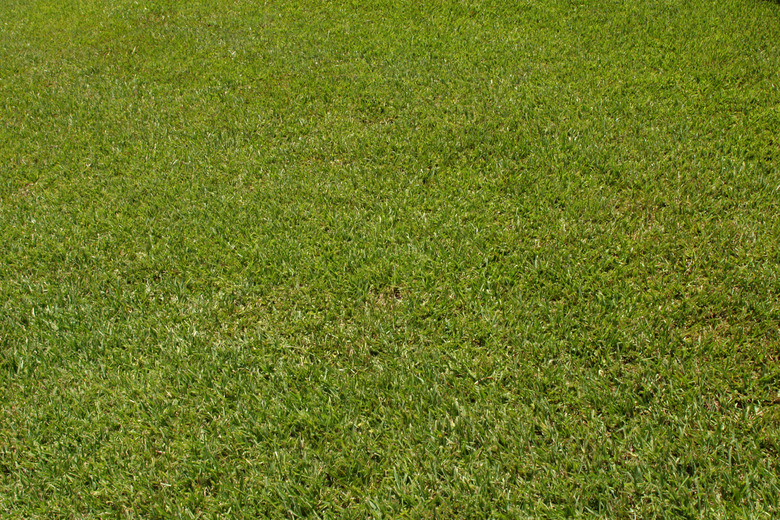Recipe For Lawn Filler Sand & Seed Soil Mixture
Divots and bare or brown spots in the lawn turf are unsightly and detract from the overall symmetry of the landscape. Spots may be the result of a lawn fungus, pedestrian traffic, digging pets, rodents, drought or herbicide application. Follow these simple tips to prepare an organic media to blend with grass seed and fill in bare spots and restore your lawn's beauty.
Test the Soil
Test the soil in your lawn. Take samples from several locations in the landscape, both sunny and shade areas. Mark them for identification and take them to your local county extension office to test for soil compaction, nutrient content and pH levels. Most grasses grow best in soil with a pH level of 6.5. If soil pH levels are low, add dolomite (calcium and magnesium). An application of 1 lb. per 100 square feet will raise the pH level by one point. Amend as recommended.
Lawn Filler Mixture
Prepare a filler mixture of equal parts of top soil, organic compost, peat moss, sand (do not use beach sand due to the high salt content) and aged, non-treated sawdust. As the organic compost breaks down into humus it improves the soil's ability to retain nutrients and water, and helps the soil particles to bind together to form a soil structure in which roots and air can move freely. Compost also feeds beneficial soil organisms and fungi to aid in transporting nutrients to the grass roots. Sawdust helps to hold moisture in the soil. Use a pitchfork or shovel to thoroughly blend the soil, compost, peat moss and sand mixture. The mixture should be crumbly with no visible clumps or plant debris.
Choose a grass seed blend suited for your growing area. Kentucky Bluegrass and Russian winter rye are well suited to cold climates and damper growing conditions. Fescue does well in sunny locations. Saint Augustine grass is used widely in warm and humid areas. Mix 1/2 lb. of grass seed with every 10 lbs. of filler mixture and use to fill in low or barren spots in the turf. Fill holes and areas to be repaired with the mixture. Use a garden rake to smooth and contour. Water lightly with a garden sprayer to moisten. Keep soil damp but not soggy until seed germinates. Make the repairs to the lawn in early fall when the ground is still warm enough for the grass seed to germinate. Do not apply the filler mixture in the warmest heat of the summer as seed may dry out or "burn" prior to germination.
Fertilizer
Choose an organic 10-10-10 fertilizer. The code of three numbers seen on all packaged fertilizer is required by the United States Department of Agriculture. The numbers designate, by percentage of weight, the three main ingredients that are required for healthy plant growth. Nitrogen, phosphorous and potassium, always in that order, so a 10-10-10 fertilizer would be equal amounts of nitrogen, phosphorous and potassium. Fertilizer should be applied after the new growth is firmly established. (Apply after the grass has been cut three times.)
